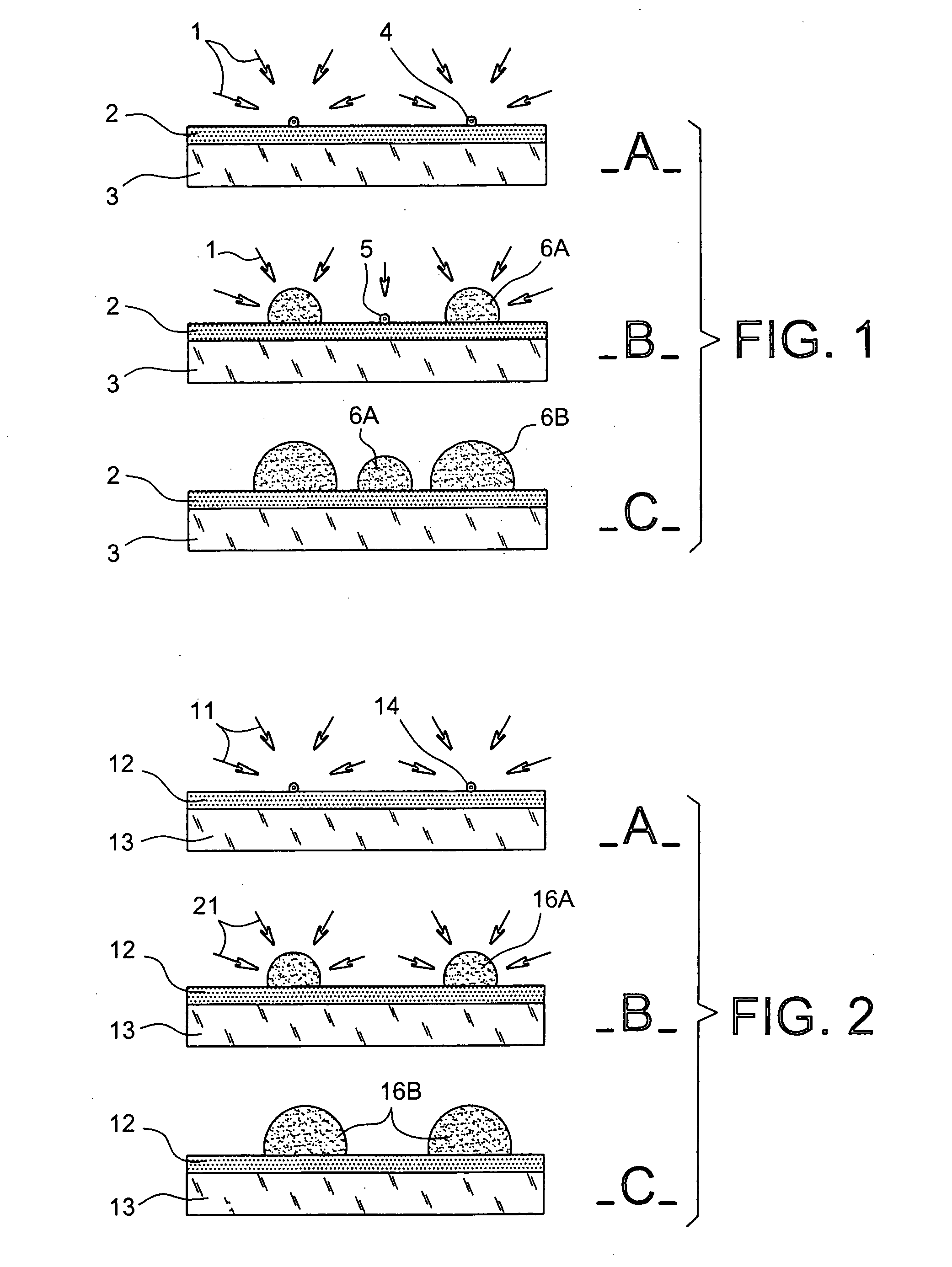Method for forming, by CVD, nanostructures of semi-conductor material of homogeneous and controlled size on dielectric material
a technology of semiconductor materials and nanostructures, which is applied in the direction of nanotechnology, crystal growth process, chemical vapor deposition coating, etc., can solve the problems of affecting the correct operation of the device, limiting the quality and performance of the device based on the structure, and high dispersion in size, around 50%, of silicon nanocrystals
- Summary
- Abstract
- Description
- Claims
- Application Information
AI Technical Summary
Benefits of technology
Problems solved by technology
Method used
Image
Examples
first embodiment
[0022] the first and second semi-conductor materials are in silicon.
second embodiment
[0023] the first semi-conductor material is in silicon and the second semi-conductor material is in germanium.
[0024] In other words, the method according to the invention makes it possible, firstly, to deposit nanostructures of germanium isolated from each other on a dielectric material by CVD; if the substrate of dielectric material is in silica and one uses germane as precursor of germanium, one does not need, thanks to said method, to deposit an intermediate continuous layer of silicon on the substrate of dielectric material of silica. By said method, the nanostructures have a homogeneous and controlled size, and their density varies between 10.sup.9 and some 10.sup.12 / cm.sup.2. Advantageously, by playing on the temperature and pressure parameters of the precursor during the deposition, one can obtain either crystalline or amorphous nanostructures.
[0025] Furthermore, the invention also makes it possible to deposit, on a dielectric material, nanostructures of silicon isolated fro...
PUM
| Property | Measurement | Unit |
|---|---|---|
| temperature | aaaaa | aaaaa |
| temperature | aaaaa | aaaaa |
| partial pressures | aaaaa | aaaaa |
Abstract
Description
Claims
Application Information
 Login to View More
Login to View More - R&D
- Intellectual Property
- Life Sciences
- Materials
- Tech Scout
- Unparalleled Data Quality
- Higher Quality Content
- 60% Fewer Hallucinations
Browse by: Latest US Patents, China's latest patents, Technical Efficacy Thesaurus, Application Domain, Technology Topic, Popular Technical Reports.
© 2025 PatSnap. All rights reserved.Legal|Privacy policy|Modern Slavery Act Transparency Statement|Sitemap|About US| Contact US: help@patsnap.com


